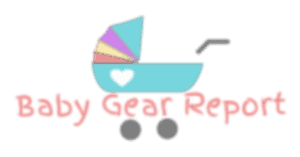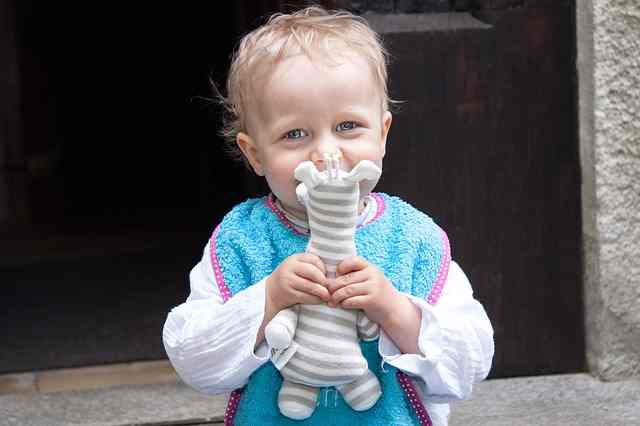I was recently having dinner with a cousin, when the topic of bibs came up. She started describing her quest for good bibs, and what makes a bib good. What she said made me realize that I knew almost nothing about bibs. I use them everyday, but I didn’t really know them. So I did some research, and here’s what I found out.
Choosing the type of baby bib
There are several different types of bibs, each with their own specific features, benefits, drawbacks, and times when they are meant to be used.
Drool Bibs
Drool bibs are the smallest type of bib. As its name implies it is meant to handle a baby’s drool, so it doesn’t need to be large; just big enough to collect whatever might dribble off of your baby’s chin.
Because they are designed to collect drool as your child is playing and living life, they are meant to be worn for a significant time. Sometimes all day. This means that they should be designed to not get caught on anything as your baby moves around.
Since your baby’s mouth will typically become a drool fountain when they start teething, often these bibs are designed with teething babies in mind. So don’t be surprised if you find one of these bibs have teething accessories attached to the tip.
Feeding Bibs
Feeding bibs are larger than drool bibs. They need to be. As bibs that are meant to be worn during meal time, they need to be big enough to catch everything that’s going to fall down. Those little drool bibs might save half the shirt, but there’s no way they’re going to save it all.
These bibs are usually a lot less fancy. They are only meant to be worn a short time, and will likely be smeared with pureed vegetables most of that time. Performance and absorption is key here.
Some feeding bibs are fancy though. They come with pockets attached at the bottle to protect the shorts and floor by collecting and holding all the big pieces that fall down.
Long Sleeved Bibs
Here’s the largest of bibs…the long sleeved bib. Basically a big gown that a baby wears over their entire front. Nothing is getting to the baby’s clothes when they have one of these. If your baby is an extremely messy eater or if they are going to have an extra messy playtime, this is the bib you want. Since the from of them will likely be pretty messy, they open from the back to allow easy removal.
Important Features to look for in bibs
Regardless of what bib you have, there are a number of important features you should look for and consider when choosing your next bib. Not all features will be available in all bibs, so you might need to determine which is most important and which you can compromise on.
Easy to fold up and store
Babies need a lot of bibs. In order for them to avoid taking over all of your baby’s storage, they need to be easy for fold up and store. Perhaps you have a few feeding bibs with the plastic pocket which isn’t very foldable. That’s fine. Just be sure that you have enough space for the bibs you are thinking about buying.
Easy to clean
Your bibs will get dirty. It’s just a fact. They are going to get very dirty. Be sure that the bibs you use will be easy to clean since you will be cleaning them often.
Not all bibs are cleaned the same way. Make sure you know how to clean the bibs you are considering. The bibs will likely either be cleaned by wipe down only, dishwasher, or washing machine. Determine which option is best for you, and focus on the bibs which use that option.
Type of fastener
Bibs are usually secured with a snap, string, or velcro fastener. Each have their own benefits and drawbacks, so figure out which you prefer. Personally I lean toward velcro. It’s so convenient and doesn’t work itself loose.
Location of fastener
The location of the fastener is also important. It’ll either be directly behind or to the side of the child’s head. In the past it seems that it was always located in the back, though more and more I am seeing bibs with the fastener to the side.
On the side makes a lot of sense. Typically when you are feeding a child you are sitting directly in from of the child. With the fastener on the side, you can remove and attach the bib easily. If the fastener was in the back, you’d probably have to stand up and push the child forward so you could reach.
Comfort
Drool bibs are worn for long periods of time, so comfort is important. It would be awful to put a bib on your baby only to find that it’s rubbing the neck all wrong and irritating the skin.
Waterproof and absorption level
The whole point of bibs are to soak up drool or food and protect your baby’s clothes. They need to be waterproof to prevent the liquid from soaking all the way through it, but they also need to absorb the liquid to prevent it from just running off and onto the shorts.
Often the bib will have two layers, one on top that absorbs and one below that’s waterproof. Best of both worlds and helps you avoid compromises.
Attached Accessories
Depending on the needs of your baby, and you, accessories attached to your baby’s bib might very important. If you are trying out baby led weaning, then it’s likely that they are trying to eat pieces of food that has not been pureed. Perhaps in this case, a feeding bib with a pocket would be a great item so that those large pieces of food are caught before they fall on the floor.
If your baby is teething, then having a bib with an attached teething toy would be great for their drool bib. Having a teething toy always in reach of your baby will likely make them extremely happy.
Disposable or washable
Do you want a bib that will last a long time and can be washed and reused over and over again? Or are you in need of a temporary bib that you can use once and easy discard?
Both options have their benefits and times when they are needed. If you are traveling and don’t have access to laundry facilities, then a handful of disposable bibs would likely be a great idea and save you from a lot of headaches.
Type of fabric
The fabric of a bib has a massive impact on the look, feel, and performance. In the section below I describe some of the fabrics which are commonly found in bibs.
What fabrics make the best bibs
In washable bibs, there is typically two layers of fabric: top and bottom. Some more inexpensive bibs might just have one layer, but two is typical.
The top layer is the fabric that everyone sees. It is what faces out from the baby toward the rest of the world and all the liquids. This fabric should be very absorbent to soak up all the liquids before they run down to your baby’s lap or the floor.
The bottom layer rests against your baby’s chest and is the final layer of protection for clothing. This layer should be waterproof to prevent all the liquid that the top layer soaked up from reaching the clothes. Most of the time the bottom layer is a simple, plain color while the top layer is pretty with colors and patterns.
Typical top layer fabrics
Cotton
Cotton is extremely popular. It’s probably the most common top layer fabric. This material is inexpensive, easy to sew, very thin, and can come with many designs.
The one downside I see is that it is easy to wrinkle, so if that’s important you might want to either avoid this one or invest in a good iron.
Flannel
Flannel is like fluffy cotton. It also is easy to work with and comes with many different designs to accommodate any taste. However since it is fluffier, it will take up more space in your storage.
Jersey
Jersey is a fabric made of wool, cotton, and synthetic fibers. Thanks to those synthetic fibers it is less likely to get wrinkled, but due to the reduced cotton content it is also less absorbent. So if you are looking for a Jersey bib, make sure it still has a high cotton content to ensure that it will absorb any liquids well.
This material is also much more expensive, harder to sew, and bulkier than the others we’ve already discussed.
Bamboo
Bamboo is probably the least common of the top layer fabrics. It’s actually much more common when the bib only has one layer.
This material only allows very simple designs and it doesn’t absorb liquid anywhere near as well as the other fabrics. Though it is very waterproof, so you can rest assured that your baby’s shirt will stay dry when they are wearing a bamboo bib.
Typical bottom layer fabrics
Microfleece
Microfleece is very thin and soft, so it provides a very comfortable feel if lays directly on your baby’s chest. It also economical and does a good job of restricting liquid from passing through. This material isn’t waterproof, but it’s close.
Polar fleece
Polar fleece is a more economical option than microfleece, though it is not quite as soft or thin.
Polyester/Polyurethane Laminated (PUL) knit
PUL knit fabric, thanks to its plastic material, is completely waterproof. So if that is the priority then this is what you want. Just be aware that it won’t be nearly as comfortable against your baby’s skin, so a shirt might be important.
Plush
Plush is a luxurious and expensive material to use. It’s so soft and fluffy that your baby probably won’t want it taken off. Since it is made from polyester it is going to be waterproof and protect your baby’s clothes well.
Flannel
Flannel is another soft and inexpensive option to use. Just remember that this is also commonly a top layer fabric, so don’t expect it to be waterproof. If you use bibs with a flannel bottom layer, be prepared to change bibs often.

